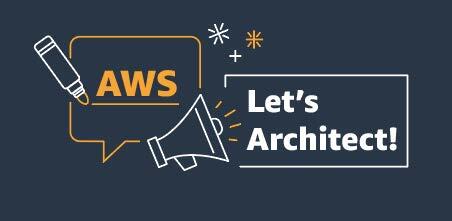AWS Architecture Blog
Category: AWS Cloud Development Kit
Let’s Architect! Open-source technologies on AWS
We brought you a Let’s Architect! blog post about open-source on AWS that covered some technologies with development led by AWS/Amazon, as well as well-known solutions available on managed AWS services. Today, we’re following the same approach to share more insights about the process itself for developing open-source. That’s why the first topic we discuss […]
Optimizing fleet utilization with Amazon Location Service and HERE Technologies
The fleet management market is expected to grow at a Compound Annual Growth Rate (CAGR) of 15.5 percent—from 25.5 billion US dollars in 2022 to USD 52.4 billion in 2027. Optimizing how your organization uses its vehicle fleet is important for logistics and service providers such as last mile, middle mile, and field services. In […]
Let’s Architect! Using open-source technologies on AWS
With open-source technology, authors make software available to the public, who can view, use, or change it and add new features or support new capabilities. Open-source technology promotes collaboration across different teams, organizations, and people because the process often includes different perspectives and ideas, which typically results a stronger solution. It can be difficult to […]
Deploying Sample UI Forms using React, Formik, and AWS CDK
Companies in many industries use UI forms to collect customer data for account registrations, online shopping, and surveys. It can be tedious to create form fields. Proper use of input validation can help users easily find and fix mistakes. Best practice is that users should not see a form filled with “this field is required” […]
Automate Amazon Connect Data Streaming using AWS CDK
Many customers want to provision Amazon Web Services (AWS) cloud resources quickly and consistently with lifecycle management, by treating infrastructure as code (IaC). Commonly used services are AWS CloudFormation and HashiCorp Terraform. Currently, customers set up Amazon Connect data streaming manually, as the service is not available under CloudFormation resource types. Customers may want to […]
Field Notes: How to Build an AWS Glue Workflow using the AWS Cloud Development Kit
Many customers use AWS Glue workflows to build and orchestrate their ETL (extract-transform-load) pipelines directly in the AWS Glue console using the visual tool to author workflows. This can be time consuming, harder to version control, and error prone due to manual configurations, when compared to managing your workflows as code. To improve your operational […]
Disaster Recovery (DR) Architecture on AWS, Part I: Strategies for Recovery in the Cloud
As lead solutions architect for the AWS Well-Architected Reliability pillar, I help customers build resilient workloads on AWS. This helps them prepare for disaster events, which is one of the biggest challenges they can face. Such events include natural disasters like earthquakes or floods, technical failures such as power or network loss, and human actions […]
Scaling RStudio/Shiny using Serverless Architecture and AWS Fargate
Data scientists use RStudio server as an Integrated Development Environment (IDE) to develop, publish, and share interactive web dashboards built on Shiny Server. Although it is possible to use virtual server infrastructure in the cloud to run R workloads, containerization offers significant operational benefits. Migrating R workloads into a serverless model in AWS, customers can […]
Scaling up a Serverless Web Crawler and Search Engine
Introduction Building a search engine can be a daunting undertaking. You must continually scrape the web and index its content so it can be retrieved quickly in response to a user’s query. The goal is to implement this in a way that avoids infrastructure complexity while remaining elastic. However, the architecture that achieves this is […]
Field Notes: Comparing Algorithm Performance Using MLOps and the AWS Cloud Development Kit
Comparing machine learning algorithm performance is fundamental for machine learning practitioners, and data scientists. The goal is to evaluate the appropriate algorithm to implement for a known business problem. Machine learning performance is often correlated to the usefulness of the model deployed. Improving the performance of the model typically results in an increased accuracy of […]








